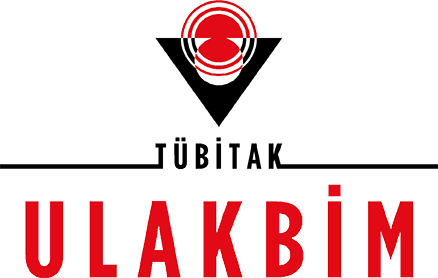Ağustos 2015
- Ana Sayfa
- Sayılar
- Ağustos 2015
- Argon plazma koagülasyon ile tedavi edilen gastrik anjiodisplazi: İki olgu sunumu
Ağustos 2015 / (23 - 2)
Argon plazma koagülasyon ile tedavi edilen gastrik anjiodisplazi: İki olgu sunumu
Sayfa Numaraları
50-52
Yazarlar
Şehmus ÖLMEZ
1
, Süleyman SAYAR
2, Ufuk AVCIOĞLU
3, İlyas TENLİK
4
Kurumlar
1
Department of Gastroenterology, Yüzüncü Yıl University School of Medicine, Van
2 Department of Gastroenterology, Dr. Ersin Arslan State Hospital, Gaziantep
3 Department of Gastroenterology, Koru Hospital, Ankara
4 Department of Gastroenterology, Türkiye Yüksek İhtisas Research and Educational Hospital, Ankara
2 Department of Gastroenterology, Dr. Ersin Arslan State Hospital, Gaziantep
3 Department of Gastroenterology, Koru Hospital, Ankara
4 Department of Gastroenterology, Türkiye Yüksek İhtisas Research and Educational Hospital, Ankara
Özet
Anjiodisplaziler nadir fakat gastrointestinal kanamanın önemli bir sebebidir.
Yaygın olarak kolonda görülmekle birlikte nadir olarak midede de saptanır.
Bu lezyonların tedavisinde farklı endoskopik tedavi yöntemleri kullanılmasına rağmen günümüzde argon plazma koagülasyon en sık kullanılan
kullanılan yöntemdir. Burada argon plazma koagülasyon ile başarılı şekilde
tedavi edilmiş aşikar kanamaya sebep olan iki gastrik anjiodisplazi vakası
sunuyoruz. Bu lezyonların argon plazma koagülasyon ile endoskopik tedavisini tartıştık. argon plazma koagülasyon’nın aşikar kanama ile başvuran
gastrik anjiodisplaziler’nin tedavisinde güvenli, etkili ve kolay uygulanan bir
tedavi yöntemi olduğunu düşünmekteyiz
Anahtar Kelimeler
Gastrik anjiodisplazi, argon plazma koagülasyon, kanama
Giriş
Vascular ectasias consist of angiodysplasia (AD), gastric antral
vascular ectasia (GAVE) and telangiectasia. ADs are thin-walled tortuous vessels found in any part of the gastrointestinal
(GI) tract. In endoscopty, they are typically seen as discrete,
flat, or slightly raised bright red lesions 2 to 10 mm in size,
often with fern-like margins and a surrounding palerim (1,2).
Gastrointestinal ADs are the most common vascular malformation of the GI tract in the general population. Most AD
patients are elderly (2) though the prevalence of ADs in the
general population is unknown since most are asymptomatic
(3). These lesions have been detected more frequently with
advances in endoscopic imaging and therapeutic techniques
and mortality related to these lesions has significantly decreased (2). ADs are primarily located in the colon (80%), less
frequently in the small intestine (15%), and quite rarely in
the stomach, (4) and are associated with diabetes aortic stenosis, chronic renal failure and Von Willebrand disease (2).
Most patients with ADs do not bleed and rarely cause overt
GIB (5). Small intestine ADs are the most common causes of bleeding in patients older than 50-60 years (6) but bleeding
caused by gastric ADs is rarely seen (7).
Despite different methods used in the treatment of ADs, most
gastroenterology clinical practices typically treat lesions with
APC in (2,3). In the present case report, we discuss gastric
ADs treated with argon plasma coagulation
Olgu
Most ADs do not bleed but they may cause either occult
bleeding that often leads to iron deficiency anemia, or overt
bleeding, presenting with hematemesis or melena, which are
responsible for approximately 4-7% of upper GIB (1,3,8).
Endoscopic, medical and surgical therapy are used in the treatment of ADs (3). Resolution of anemia, reduced transfusion
requirements and reduction of rebleeding are treatment aims
with bleeding GI ADs (5). Treatment of non-bleeding lesions
is generally not recommended (2). Endoscopic modalities are
most widely used for the treatment of ADs. Various endoscopic modalities are used for the treatment of these lesions,
including sclerotherapy, multipolar electrocoagulation, argon and Nd:YAG laser photocoagulation and APC. Surgery
and medical treatments such as somatostatin analogs and
estrogen with progresterone are sometimes used for patients
who have failed in endoscopic treatment or with challenging
lesions to manage endoscopically due to location and number
(1-5). Even if medical or endoscopic treatment is not applied, nearly half of the lesions with bleeding spontaneously
stop, but rebleeding is seen in almost a quarter of the patients
undergoing endoscopic treatment and at follow-up these patients often need blood transfusions (3,4).
APC is a non-contact electrocoagulation device that uses a
high-frequency monopolar current conducted to target tissues through ionized argon gas. APC was first introduced and
utilized in surgical and laparoscopic procedures and adapted
for use in flexible endoscopy in 1991; its use has become
widespread. It is easy to use and is an effective endoscopic
treatment method that permits tangential application with
challenging lesions. It is safer and less costly than using a Nd:
YAG laser due to the limited depth of the thermal effect in
the tissue caused by APC. It has a low rebleeding rate except
for uremic patients (1,8,9). However, APC may lead to minor
complications such as transient abdominal pain and bloating
and major complications such as perforation, colon explosion
and even death (9,10).
Currently, APC is widely used in the treatment of various
lesions, especially vascular ectasia, including GAVE, angiodysplasia, telangiectasia, and radiation induced enteropathy
and proctopathy (3,8,11,12). It has become the most commonly used endoscopic method for these lesions and is effective for the treatment of angiodysplasia with active bleeding
(8,13,14). However, the efficacy of endoscopic therapy for GI ADs has not been proven in randomized, controlled studies (15). Moreover, APC has been used with different power
levels ranging from 30 to 100 W and flow rates of argon gas
from 0.8 to 2 liter/minin the treatment of vasculer ectasia.
There are no studies comparing different power settings and
flow rates for efficacy and safety for this application (8).
As in both our cases, despite the fact that the lesions were
tangential, we treated these lesions successfully with APC. No complications related to APC occured and after treatment no
blood transfusions were needed. We also saw that the lesion
in one of the patients was no longer present in the follow up
control endoscopy.
In summary, we report of two cases of gastric AD causing
overt upper GIB that were successfully treated with argon
plasma coagulation (APC), which is a safe, effective and easy
to use treatment modality of bleeding with these lesions.
Tartışma
Most ADs do not bleed but they may cause either occult
bleeding that often leads to iron deficiency anemia, or overt
bleeding, presenting with hematemesis or melena, which are
responsible for approximately 4-7% of upper GIB (1,3,8).
Endoscopic, medical and surgical therapy are used in the treatment of ADs (3). Resolution of anemia, reduced transfusion
requirements and reduction of rebleeding are treatment aims
with bleeding GI ADs (5). Treatment of non-bleeding lesions
is generally not recommended (2). Endoscopic modalities are
most widely used for the treatment of ADs. Various endoscopic modalities are used for the treatment of these lesions,
including sclerotherapy, multipolar electrocoagulation, argon and Nd:YAG laser photocoagulation and APC. Surgery
and medical treatments such as somatostatin analogs and
estrogen with progresterone are sometimes used for patients
who have failed in endoscopic treatment or with challenging
lesions to manage endoscopically due to location and number
(1-5). Even if medical or endoscopic treatment is not applied, nearly half of the lesions with bleeding spontaneously
stop, but rebleeding is seen in almost a quarter of the patients
undergoing endoscopic treatment and at follow-up these patients often need blood transfusions (3,4).
APC is a non-contact electrocoagulation device that uses a
high-frequency monopolar current conducted to target tissues through ionized argon gas. APC was first introduced and
utilized in surgical and laparoscopic procedures and adapted
for use in flexible endoscopy in 1991; its use has become
widespread. It is easy to use and is an effective endoscopic
treatment method that permits tangential application with
challenging lesions. It is safer and less costly than using a Nd:
YAG laser due to the limited depth of the thermal effect in
the tissue caused by APC. It has a low rebleeding rate except
for uremic patients (1,8,9). However, APC may lead to minor
complications such as transient abdominal pain and bloating
and major complications such as perforation, colon explosion
and even death (9,10).
Currently, APC is widely used in the treatment of various
lesions, especially vascular ectasia, including GAVE, angiodysplasia, telangiectasia, and radiation induced enteropathy
and proctopathy (3,8,11,12). It has become the most commonly used endoscopic method for these lesions and is effective for the treatment of angiodysplasia with active bleeding
(8,13,14). However, the efficacy of endoscopic therapy for GI ADs has not been proven in randomized, controlled studies (15). Moreover, APC has been used with different power
levels ranging from 30 to 100 W and flow rates of argon gas
from 0.8 to 2 liter/minin the treatment of vasculer ectasia.
There are no studies comparing different power settings and
flow rates for efficacy and safety for this application (8).
As in both our cases, despite the fact that the lesions were
tangential, we treated these lesions successfully with APC. No complications related to APC occured and after treatment no
blood transfusions were needed. We also saw that the lesion
in one of the patients was no longer present in the follow up
control endoscopy.
In summary, we report of two cases of gastric AD causing
overt upper GIB that were successfully treated with argon
plasma coagulation (APC), which is a safe, effective and easy
to use treatment modality of bleeding with these lesions.
Kaynaklar
1. Pavey DA, Craig PI. Endoscopic therapy for upper-GI vascular ectasias.
Gastrointest Endosc 2004;59:233-8.
2. Sami SS, Al-Araji SA, Ragunath K. Review article: gastrointestinal angiodysplasia - pathogenesis, diagnosis and management. Aliment Pharmacol Ther 2014;39:15-34.
3. Jackson CS, Gerson LB. Management of gastrointestinal angiodysplastic
lesions (GIADs): a systematic review and meta-analysis. Am J Gastroenterol 2014;09:474-83.
4. Bon C, Aparicio T, Vincent M, et al. Long-acting somatostatin analogues
decrease blood transfusion requirements in patients with refractory gastrointestinal bleeding associated with angiodysplasia. Aliment Pharmacol
Ther 2012;36:587-93.
5. Swanson E, Mahgoub A, MacDonald R, et al. Medical and endoscopic
therapies for angiodysplasia and gastric antral vascular ectasia: a systematic review. Clin Gastroenterol Hepatol 2014;12:571-82.
6. Regula J, Wronska E, Pachlewski J. Vascular lesions of the gastrointestinal tract. Best Pract Res Clin Gastroenterol 2008;22:313-28.
7. Huang C, Lichtenstein D. Nonvariceal upper gastrointestinal bleeding.
Gastroenterology Clin N Am 2003;32:1053-78.
8. Chiu YC, Lu LS, Wu KL, et al. Comparison of argon plasma coagulation
in management of upper gastrointestinal angiodysplasia and gastric antral vascular ectasia hemorrhage. BMC Gastroenterol. 2012 9;12:67. 9. Robotis J, Sechopoulos P, Rokkas Th. Argon plasma coagulation: Clinical applications in Gastroenterology. Annals of Gastroenterology
2013,16:131-7.
10. Manner H, Plum N, Pech O, et al. Colon explosion during argon plasma
coagulation. Gastrointest Endosc 2008;67:1123-7.
11. Ginsberg GG, Barkun AN, Bosco JJ, et al. American Society for Gastrointestinal endoscopy. The argon plasma coagulator. Gastrointest Endosc
2002;55:807-10.
12. Vargo JJ. Clinical applications of the argon plasma coagulator. Gastrointest Endosc 2004;59:81-8.
13. Kwan V, Bourke MJ, Williams SJ, et al. Argon plasma coagulation in
the management of symptomatic gastrointestinal vascular lesions: experience in 100 consecutive patients with long-term follow-up. Am J
Gastroenterol 2006;101:58-63.
14. Herrera S, Bordas JM, Llach J, et al. The beneficial effects of argon plasma coagulation in the management of different types of gastric vascular
ectasia lesions in patients admitted for GI hemorrhage. Gastrointest Endosc 2008;68:440-6.
15. Bollinger E, Raines D, Saitta P. Distribution of bleeding gastrointestinal angioectasias in a Western population. World J Gastroenterol
2012;18:6235-9..



